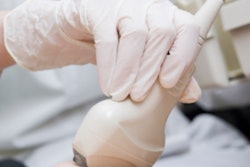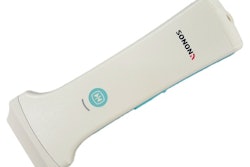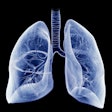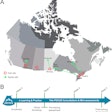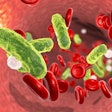Presenter Flemming Forsberg, PhD, and colleagues evaluated 11 patients scheduled for neoadjuvant therapy of a localized breast cancer who had four ultrasound exams:
- One immediately before therapy started
- One after 10% of the therapy had been delivered
- One after 60% of the therapy had been delivered
- One after the course of chemotherapy was complete
The exams were performed using a modified Logiq 9 scanner with a 4D10L probe (GE Healthcare); software allowed for the collection of radiofrequency data from 4D subharmonic imaging (SHI) before and during delivery of a contrast agent (Definity, Lantheus Medical Imaging) at settings optimized for subharmonic-aided pressure estimation (SHAPE) and SHI. The researchers then calculated maximum subharmonic frequency magnitude and mean subharmonic intensity from the SHAPE and SHI radiofrequency data for all four exams.
Results from the exam at the 10% therapy completion point showed the subharmonic signal increased more in the tumor than in the surrounding area for complete responders (final tumor size less than 10% of the original), compared with partial/nonresponders. The relative subharmonic signal in the tumor increased for complete responders but decreased for partial/nonresponders after 10% completion of the therapy relative to the exam conducted before the therapy began, according to the researchers.
Although the study's sample size was small, the results suggest that 4D SHAPE and SHI could help clinicians predict neoadjuvant chemotherapy response of breast cancer as early as at 10% completion of therapy, Forsberg and colleagues concluded.






